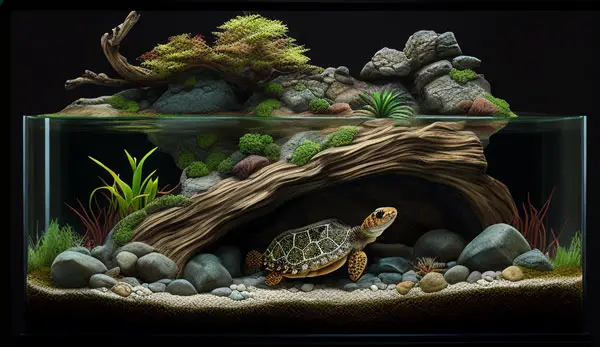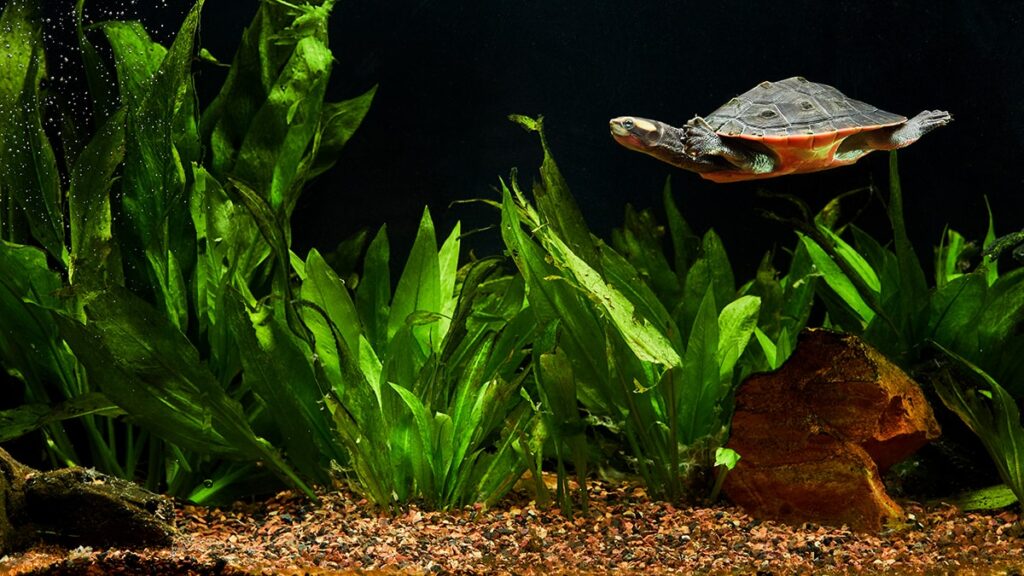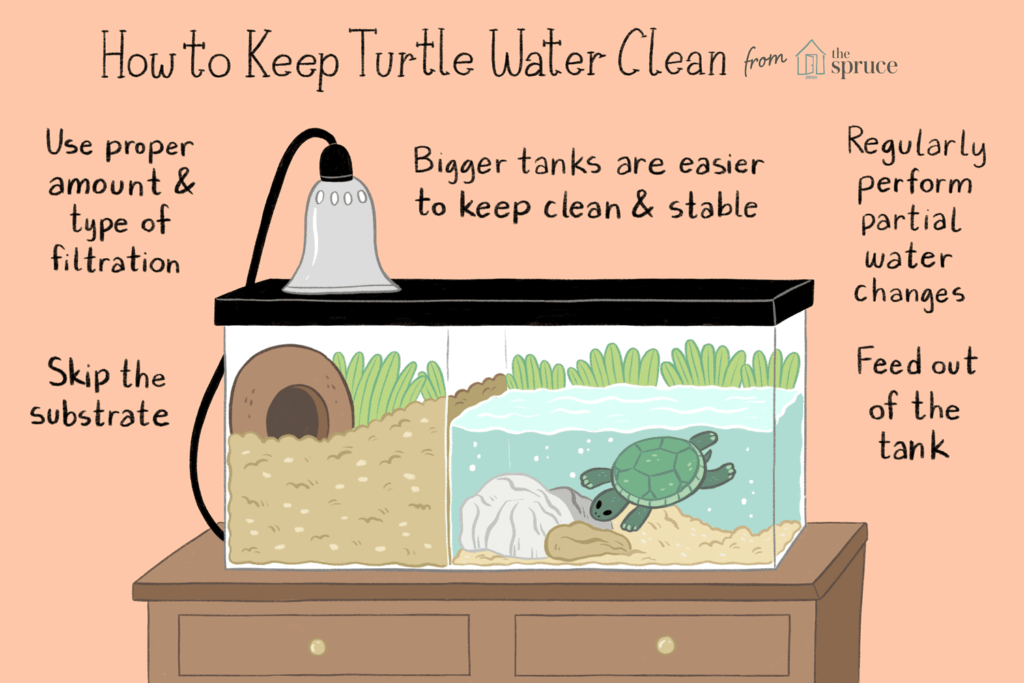If you’re a proud turtle owner, then you know the joy and responsibility that comes with creating an optimal environment for your shelled friend. But have you ever considered the importance of monitoring the water ammonia levels in your indoor turtle enclosure? In this article, we will explore why this often overlooked task is crucial for the health and well-being of your turtles. From understanding the harmful effects of ammonia to learning how to properly test and maintain water quality, you’ll discover the key steps to ensure a safe and thriving habitat for your beloved turtles.
Reasons for Monitoring Water Ammonia Levels
Understanding Ammonia and its Sources
When it comes to maintaining the health and well-being of your turtles, monitoring water ammonia levels is of utmost importance. Ammonia is a toxic compound that can rapidly accumulate in aquatic environments, posing a serious threat to the health of your turtles. Understanding where ammonia comes from is crucial in preventing its buildup. Ammonia can originate from various sources, such as uneaten food, decaying organic matter, fish waste, and even tap water.
Detecting Ammonia Spikes
Monitoring water ammonia levels allows you to detect and respond to ammonia spikes promptly. Spikes in ammonia levels can occur due to an increase in the production of waste or a decrease in the efficiency of your filtration system. By regularly testing the ammonia levels in the water, you can catch these spikes early on and take appropriate measures to prevent any harm to your turtles.
Preventing Ammonia Toxicity
One of the primary reasons for monitoring water ammonia levels is to prevent ammonia toxicity in your turtles. High levels of ammonia can have detrimental effects on their health, leading to respiratory distress, impaired growth and development, a weakened immune system, and altered behavior. By keeping a close eye on ammonia levels and taking action when necessary, you can ensure the well-being of your turtles and provide them with a safe and healthy environment.
Protecting Turtle Health and Well-being
Ultimately, monitoring water ammonia levels is all about protecting the health and well-being of your turtles. Turtles are highly sensitive to changes in water quality, and even small increases in ammonia levels can have serious consequences for their overall health. By maintaining optimal water conditions through regular monitoring, you are providing your turtles with the best chance of thriving in their indoor enclosures.
The Effects of High Ammonia Levels on Turtles
Respiratory Distress
High ammonia levels can cause respiratory distress in turtles. As ammonia levels rise, it becomes increasingly difficult for turtles to extract oxygen from the water. This can lead to labored breathing, gasping at the water’s surface, and even suffocation in severe cases. Regular monitoring of ammonia levels can help prevent these respiratory issues and ensure that your turtles can breathe easily.
Impaired Growth and Development
Ammonia toxicity can also have a significant impact on the growth and development of your turtles. High levels of ammonia can hinder their ability to absorb essential nutrients, leading to stunted growth and developmental abnormalities. By keeping ammonia levels in check, you can promote healthy growth and ensure that your turtles reach their full potential.
Weakened Immune System
Ammonia has the potential to weaken the immune system of your turtles, making them more susceptible to diseases and infections. As ammonia levels increase, the stress on their bodies increases as well, compromising their immune response. Regular monitoring and maintenance of ammonia levels will help support a robust immune system in your turtles, keeping them healthy and resilient against pathogens.
Altered Behavior and Stress
High ammonia levels can cause turtles to exhibit abnormal behaviors and experience increased stress. They may become lethargic, lose their appetite, or display signs of agitation. These changes in behavior are a clear indication that something is amiss in their environment. By monitoring ammonia levels, you can identify and address any issues promptly, allowing your turtles to thrive in a stress-free environment.

Methods of Monitoring Water Ammonia Levels
Ammonia Testing Kits
One of the most common methods of monitoring water ammonia levels is through the use of ammonia testing kits. These kits typically include test strips or liquid reagents that react with ammonia in the water, producing a color change that can be compared to a color chart to determine the ammonia concentration. Testing kits are affordable, easy to use, and provide relatively accurate results, making them a popular choice among turtle keepers.
Using Water Quality Meters
Water quality meters are another effective method for monitoring ammonia levels in turtle enclosures. These meters use electrodes to measure the concentration of ammonia in the water and display the results digitally. While water quality meters may be more expensive than testing kits, they offer the advantage of providing real-time readings and eliminating the need for subjective color comparisons.
Lab Testing Services
For a more comprehensive analysis of water quality, you may opt to send water samples to a lab for testing. Lab testing services can provide detailed reports on ammonia levels, as well as other water parameters such as pH, nitrate, and nitrite. These services often require a higher cost and longer turnaround time, but they can offer a more thorough assessment of the water quality in your turtle enclosure.
Considerations for Different Testing Methods
When choosing a method for monitoring water ammonia levels, it’s essential to consider factors such as cost, ease of use, accuracy, and convenience. Different methods may vary in their suitability depending on your specific needs and preferences. It’s recommended to consider a combination of testing methods to ensure a comprehensive monitoring approach for your turtle’s water quality.
Choosing the Right Monitoring Equipment
Factors to Consider
When selecting monitoring equipment for water ammonia levels, there are several factors that you should take into account. Firstly, consider the ease of use and compatibility with your turtle enclosure. You want to choose equipment that is user-friendly and can be easily integrated into your existing setup. Additionally, consider the reliability, accuracy, and maintenance requirements of the equipment to ensure consistent and dependable monitoring.
Types of Ammonia Test Kits and Meters
There is a wide range of ammonia test kits and meters available on the market. Test kits typically come in strip or liquid form, whereas meters utilize electrodes to measure ammonia levels. Each type of equipment has its pros and cons, so it’s important to choose one that aligns with your specific needs and preferences.
Reliability and Accuracy
Accuracy is crucial when monitoring water ammonia levels, as even slight variations can significantly affect the health of your turtles. Research various brands and models of ammonia test kits and meters to determine their reliability and accuracy. Reading customer reviews and seeking recommendations from fellow turtle keepers can also provide valuable insights into the quality and performance of different equipment options.
Cost and Maintenance
Consider your budget when choosing monitoring equipment, as prices can vary significantly. While it may be tempting to opt for the cheapest option, it’s important to balance cost with quality and reliability. Additionally, consider the long-term maintenance requirements of the equipment, such as the need for replacement test strips or periodic calibration of meters.
Reputation and Reviews
Lastly, take into consideration the reputation of the equipment and the reviews from other turtle keepers. Look for brands and models that have a positive track record, as this can give you confidence in the performance and reliability of the equipment. Online forums and communities are great sources of information and can provide valuable insights into the experiences of other turtle enthusiasts.

Frequency of Water Testing
Recommended Testing Schedule
To ensure the optimal health of your turtles, it’s essential to establish a regular schedule for testing water ammonia levels. The recommended frequency of testing may vary depending on factors such as the size of the enclosure, the number of turtles, and the efficiency of the filtration system. As a general guideline, it’s recommended to test the water at least once a week, with additional testing after any significant changes or events, such as adding new turtles or performing water changes.
Factors Affecting Testing Frequency
Several factors can influence the frequency of water testing for ammonia levels. The size of your turtle enclosure and the number of turtles housed within it can impact the rate at which ammonia accumulates. Larger enclosures and a higher turtle population may require more frequent testing to ensure timely detection of ammonia spikes. Additionally, the efficiency of your filtration system and the quality of your water source can also affect the testing frequency.
Monitoring during Different Life Stages
It’s important to adapt the testing frequency based on the life stage of your turtles. Juvenile turtles tend to produce more waste and have a higher ammonia output, requiring more frequent testing. As turtles mature, their waste production decreases, and the testing schedule can be adjusted accordingly. Regular monitoring during all life stages will help maintain a healthy environment for your turtles at every stage of their development.
Early Detection of Ammonia Spikes
Regular testing allows for early detection of ammonia spikes, giving you the opportunity to take immediate action. By identifying and addressing high ammonia levels promptly, you can prevent any adverse effects on your turtles’ health and minimize the risk of long-term damage. Early detection is key to maintaining optimal water quality and providing a safe and comfortable habitat for your turtles.
Interpreting Ammonia Test Results
Understanding Test Measurements
Interpreting the results of ammonia tests requires an understanding of the measurements provided by the testing method. Whether using a test kit or a water quality meter, the results may be reported in different units, such as parts per million (ppm) or milligrams per liter (mg/L). Familiarize yourself with the measurement units and their corresponding safe ranges for turtle enclosures to accurately assess the ammonia levels in your water.
Safe Ammonia Levels for Turtles
Maintaining safe ammonia levels is crucial for the health of your turtles. The ideal range for ammonia in turtle enclosures is generally considered to be below 0.25 ppm or mg/L. Any reading above this range should be addressed promptly to prevent potential harm to your turtles.
Recognizing Ammonia Spikes
While understanding safe ammonia levels is important, it’s equally vital to recognize when a spike in ammonia occurs. Ammonia spikes refer to a sudden and significant increase in ammonia levels, which can happen due to various factors such as overfeeding, inadequate filtration, or the introduction of new turtles. An ammonia spike should be treated as a red flag, signaling the need for immediate action to rectify the situation and restore optimal water conditions.
Monitoring Trends and Patterns
Interpreting ammonia test results involves more than assessing individual readings. It’s also important to look for trends and patterns over time. Regularly track and record your ammonia test results to identify any consistent increases or fluctuations. This will help you pinpoint potential issues and make necessary adjustments to prevent future ammonia spikes and maintain a stable and healthy environment for your turtles.

Taking Action to Reduce Ammonia Levels
Identifying the Source of Ammonia
To effectively reduce ammonia levels, it’s important to identify the source of ammonia in your turtle enclosure. Evaluate factors such as overfeeding, inadequate filtration, or excessive organic matter in the water. By addressing the root cause of ammonia buildup, you can effectively reduce ammonia levels and prevent further harm to your turtles.
Adjusting Feeding Practices
Overfeeding is a common culprit of ammonia buildup in turtle enclosures. Evaluate your current feeding practices and ensure that you are providing your turtles with an appropriate and balanced diet. Feed them only what they can consume within a few minutes and remove any uneaten food promptly. Adjusting your feeding practices will help prevent unnecessary waste and reduce the risk of excessive ammonia levels.
Optimizing Filtration Systems
A well-designed and properly functioning filtration system is essential for maintaining optimal water quality. Regularly clean and replace filter media to ensure maximum efficiency. Consider incorporating biological filtration methods, such as the use of bio-media or beneficial bacteria supplements, to help break down ammonia and maintain a healthy nitrogen cycle. Optimizing your filtration system will help remove excess ammonia and keep your water clean and safe for your turtles.
Maintaining Proper Water Temperature
Water temperature plays a crucial role in maintaining the health of your turtles and preventing ammonia buildup. Keeping water temperature within the appropriate range (typically between 75-85°F or 24-29°C for most turtle species) helps support the overall well-being of your turtles and aids in the efficient function of their digestive and metabolic processes. By maintaining proper water temperature, you can minimize the risk of excessive ammonia production.
Using Beneficial Bacteria Supplements
Beneficial bacteria supplements are an effective tool for reducing ammonia levels in turtle enclosures. These supplements contain nitrifying bacteria that help convert ammonia into less harmful compounds, such as nitrate. Adding beneficial bacteria to your filtration system or directly into the water can help establish a healthy balance in the nitrogen cycle and reduce ammonia toxicity. Incorporating beneficial bacteria supplements into your maintenance routine can significantly improve water quality and the overall health of your turtles.
Maintaining Optimal Water Quality
Monitoring Other Water Parameters
While monitoring ammonia levels is crucial, it’s equally important to monitor other water parameters that can affect the health of your turtles. Regularly test and maintain appropriate levels of pH, nitrate, nitrite, and dissolved oxygen. Maintaining a balanced and stable aquatic environment will help support the overall health and well-being of your turtles.
Maintaining Adequate Oxygen Levels
Sufficient oxygen levels are vital for the survival of your turtles. Ensure proper aeration and circulation within your turtle enclosure to maintain adequate oxygenation. Aeration devices such as air stones or air pumps can help increase oxygen levels in the water, preventing the accumulation of ammonia and creating a more hospitable environment for your turtles.
Controlling pH Levels
pH plays a crucial role in the overall water quality and the well-being of your turtles. Most turtle species thrive in neutral to slightly alkaline conditions, with a pH range of 6.8-7.5 being ideal. Monitor and adjust pH levels as necessary to maintain a stable and suitable environment for your turtles. pH test kits are readily available and can help you ensure that the water pH remains within the recommended range.
Balancing Nitrogen Cycle
The nitrogen cycle is a natural process that converts toxic ammonia into less harmful compounds. Regularly monitor and maintain the balance of the nitrogen cycle in your turtle enclosure. Promote the growth of beneficial bacteria by avoiding the use of harsh chemicals or medications that can disrupt the nitrogen cycle. A healthy and balanced nitrogen cycle is crucial for preventing ammonia buildup and maintaining optimal water quality.
Preventing Algae Growth
Excessive algae growth is not only unsightly but can also contribute to poor water quality. Algae release large amounts of oxygen during the day but consume oxygen during the night, potentially leading to decreased oxygen levels and increased ammonia production. Regularly clean the tank walls and remove any excess algae. Consider controlling the amount of light exposure to the tank or incorporating algae-eating aquatic species to help prevent algae overgrowth.

Preventing Ammonia Buildup
Regular Tank Maintenance
Regular tank maintenance is essential in preventing ammonia buildup in your turtle enclosure. Perform routine water changes to dilute ammonia concentration and remove accumulated waste. Clean filters, skimmers, and any other equipment regularly to maintain their efficiency. Regular maintenance ensures that your turtle enclosure remains clean and free from excessive ammonia, providing a healthier environment for your turtles.
Proper Waste Management
Managing waste effectively is crucial for preventing ammonia buildup in your turtle enclosure. Remove any uneaten food promptly, as it can rapidly decompose and release ammonia into the water. Regularly clean the tank substrate and remove excess organic matter to prevent ammonia production. Practicing good waste management will help minimize the presence of ammonia and keep your turtles’ environment clean and safe.
Avoiding Overstocking
Overstocking your turtle enclosure can lead to excessive waste production and overload the filtration system, resulting in increased ammonia levels. Always consider the size and needs of your turtle species when determining the appropriate number of turtles for your enclosure. Avoid overcrowding to ensure that your filtration system can effectively remove any ammonia and maintain a healthy environment for your turtles.
Avoiding Overfeeding
Overfeeding your turtles can contribute to ammonia buildup and poor water quality. Feed your turtles a balanced and appropriate diet according to their species and size. Only provide them with the amount of food that they can consume within a few minutes. Avoid overfeeding, as any uneaten food will decompose and release ammonia into the water.
Removing Excess Organic Matter
Excess organic matter in the form of dead plants, decaying leaves, or excess food can contribute to ammonia buildup. Regularly remove any excess organic matter from your turtle enclosure to prevent the release of ammonia into the water. This can be done during routine maintenance or whenever you notice a buildup of organic waste. Keeping the environment clean and free from excess organic matter will help maintain water quality and reduce the risk of ammonia toxicity.
The Importance of Regular Water Changes
Removing Accumulated Waste
Regular water changes play a crucial role in removing accumulated waste from your turtle enclosure. As your turtles produce waste, ammonia levels can rise over time. Performing routine water changes helps dilute the ammonia concentration and remove any accumulated waste from the tank. By regularly changing the water, you are ensuring a fresh and clean environment for your turtles.
Diluting Ammonia Concentration
Water changes are an effective method for diluting the concentration of ammonia in your turtle enclosure. By replacing a portion of the water with fresh, ammonia-free water, you are reducing the overall ammonia levels in the tank. This helps maintain a healthy and safe environment for your turtles, preventing any adverse effects on their health.
Maintaining Overall Water Quality
Regular water changes contribute to the overall water quality in your turtle enclosure. They help remove not only ammonia but also other pollutants, such as nitrate and excess minerals. By maintaining optimal water conditions through regular water changes, you are providing your turtles with a habitat that closely resembles their natural environment and supports their well-being.
Establishing a Routine
Establishing a regular water change routine is crucial for the long-term health and well-being of your turtles. Consistency and frequency are key when it comes to water changes. Determine a schedule that works best for you and your turtles, whether it’s a weekly, bi-weekly, or monthly water change. By making water changes a routine part of your turtle maintenance, you are ensuring their continued health and happiness.

